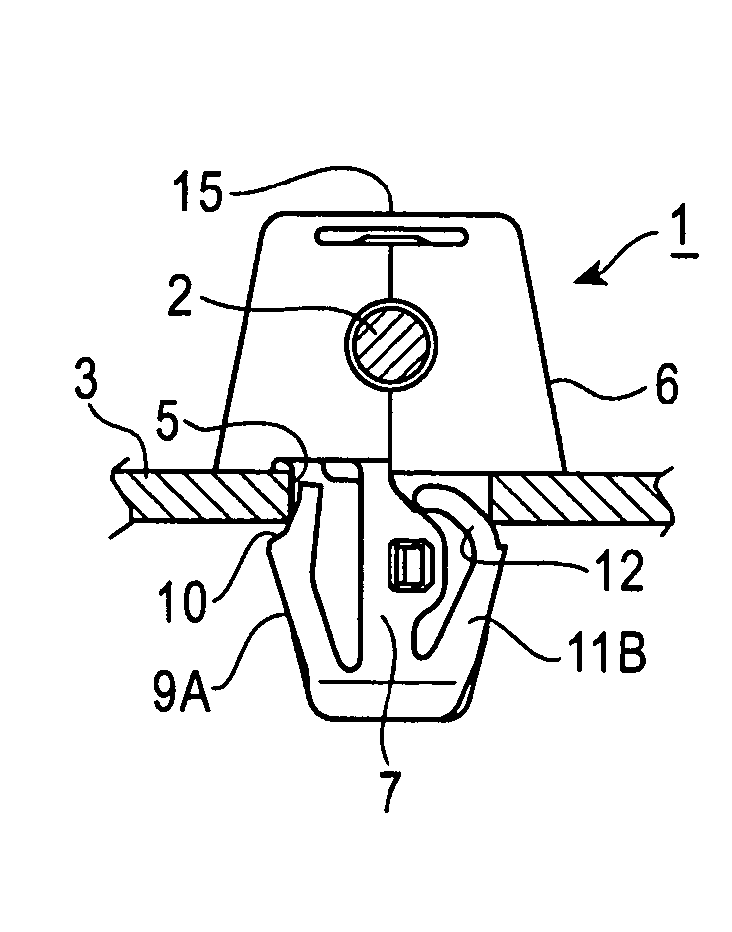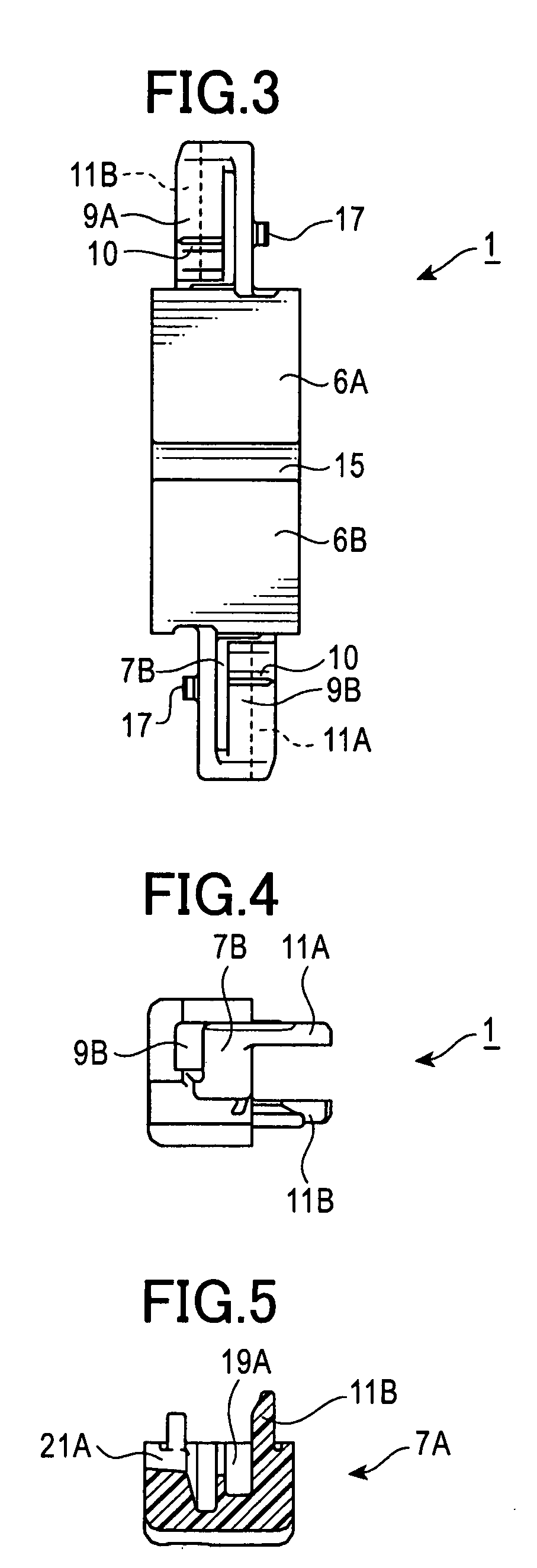Clip
- Summary
- Abstract
- Description
- Claims
- Application Information
AI Technical Summary
Benefits of technology
Problems solved by technology
Method used
Image
Examples
Example
[0034] The following is an explanation of a clip in an embodiment of the present invention with reference to the drawings. FIGS. 1-6 show the clip 1 before complementary parts thereof are fastened together, and FIGS. 7-12 show the clip 1 after the parts are fastened together. FIGS. 13-15 show the clip 1 mounted in a mounting hole 5 in a workpiece 3 such as a car body to fasten an end of a strap 2 extending from a fuel cap. FIG. 16 and FIG. 17 show the action of the fingers (described below) on the clip 1 when mounted to workpieces of different thicknesses. In this embodiment, as shown in FIG. 1 through FIG. 6, the clip 1 is divided in two vertically to form two portions during molding, and parts remain unfastened from one another before use. Complementary parts of the clip 1 are fastened together only when it is mounted on the workpiece 3 as shown in FIG. 7 through FIG. 12. The clip 1 shown in FIG. 13 through FIG. 15, holds the end of a strap 2, and is mounted in the mounting hole 5...
PUM
 Login to View More
Login to View More Abstract
Description
Claims
Application Information
 Login to View More
Login to View More - R&D
- Intellectual Property
- Life Sciences
- Materials
- Tech Scout
- Unparalleled Data Quality
- Higher Quality Content
- 60% Fewer Hallucinations
Browse by: Latest US Patents, China's latest patents, Technical Efficacy Thesaurus, Application Domain, Technology Topic, Popular Technical Reports.
© 2025 PatSnap. All rights reserved.Legal|Privacy policy|Modern Slavery Act Transparency Statement|Sitemap|About US| Contact US: help@patsnap.com



